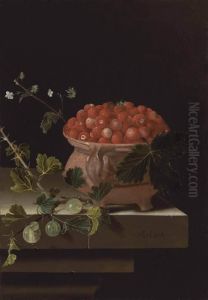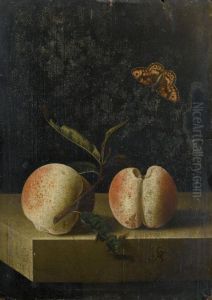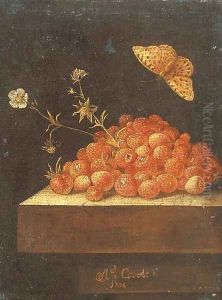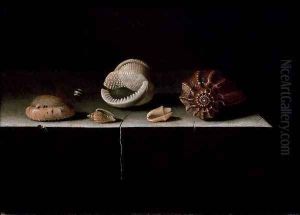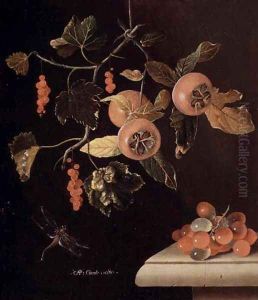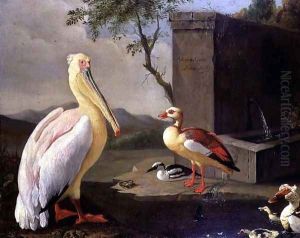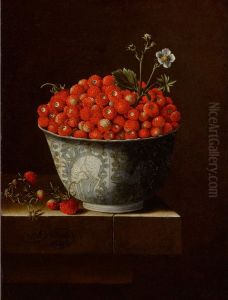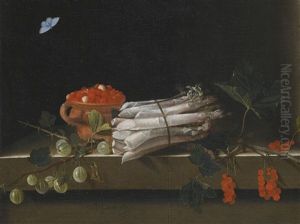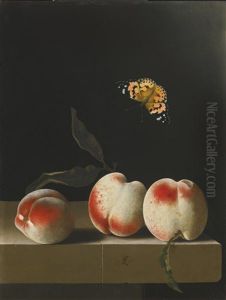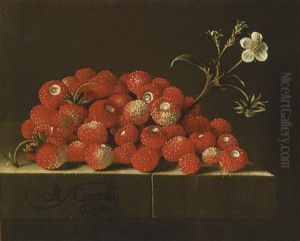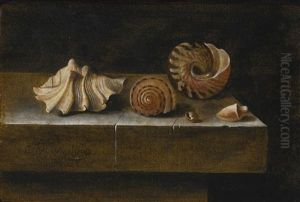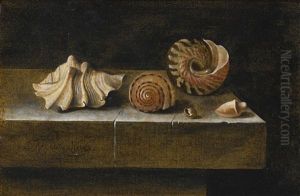Adriaen Coorte Paintings
Adriaen Coorte is a somewhat mysterious figure in the history of Dutch painting, known for his small and intimate still life works. He is believed to have been born around 1665, with his exact birthplace unknown, although it is speculated that he may have originated from Middelburg or IJzendijke in the Netherlands. Coorte's paintings are characterized by their simple composition, exquisite detail, and serene atmosphere, which set them apart from the grandiose still lifes of his contemporaries.
Unlike many of his peers, Coorte favored plain backgrounds and a limited number of objects in his works, often focusing on a few fruits, shells, or nuts, which he rendered with a delicate touch and a keen eye for naturalism. His use of light is particularly noteworthy, as he often depicted his subjects illuminated with a soft, diffused light that highlights their textures and shapes.
Coorte's career spanned a relatively short period from the late 1680s until the early 18th century. During his lifetime, he did not achieve the fame of other Dutch still life painters like Willem Claesz Heda or Jan Davidsz de Heem. It was only in the 20th century that Coorte's work was rediscovered, and he came to be appreciated for his unique approach to the genre.
Despite the beauty and quality of his work, little is known about Coorte's life. There are no known records of his training or the exact trajectory of his career. His last dated work is from 1707, which leads to the assumption that he died sometime after this date. Today, Coorte's still lifes are highly regarded for their quiet elegance and are found in various prominent museum collections, where they continue to be studied and admired.


